Sweet and Savory Bush Tomato Recipes
33 min read Explore bush tomato's caramel-tangy punch in desserts and mains, with techniques, pairings, and recipe ideas showcasing Indigenous ingredients and contemporary Australian flavor. October 04, 2025 03:07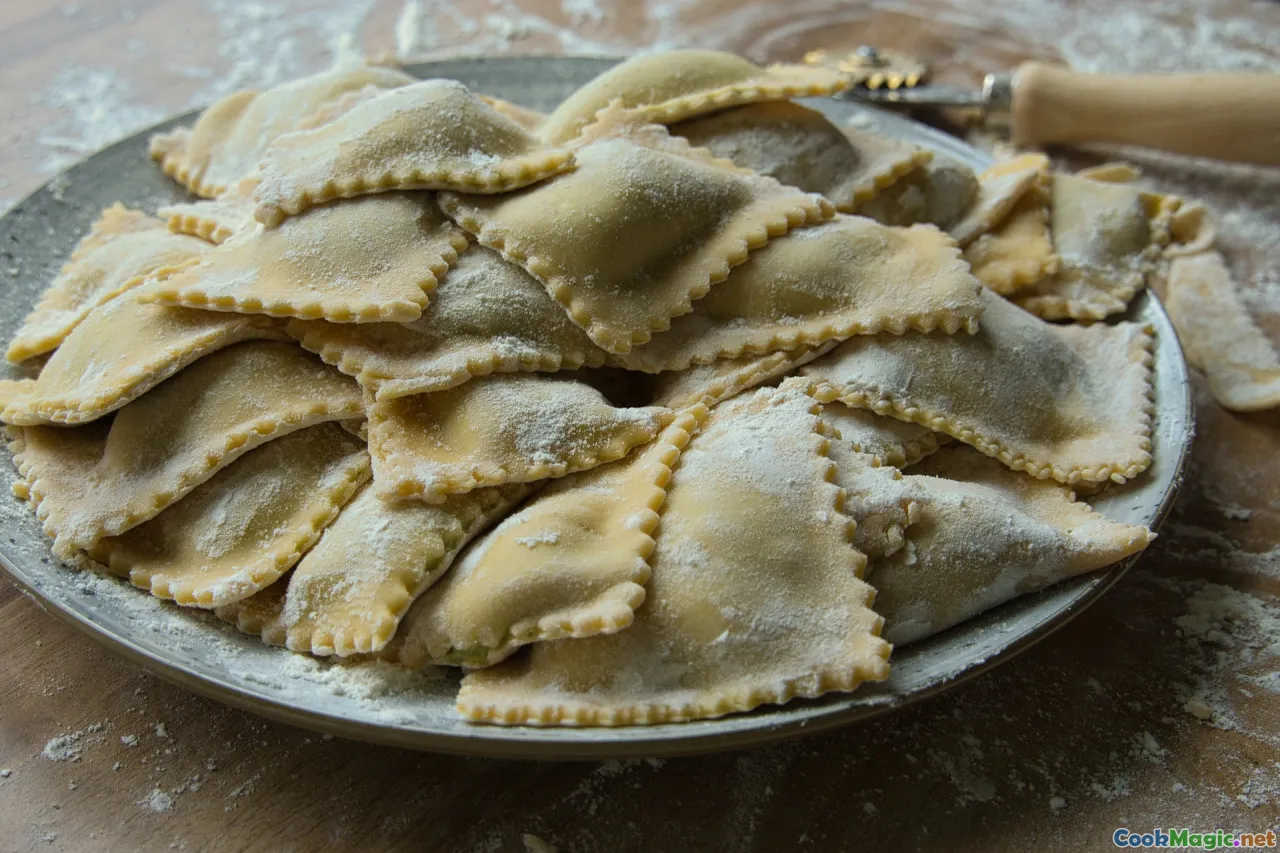
The first time I tasted bush tomato, it was warm from the Central Australian sun—hard little spheres the color of rust, with a perfume that seemed to echo the desert itself: smoke, caramel, dusty thyme, a shadow of tamarillo and black tea. An older Anangu woman laughed at my puzzled face and called them desert raisins, akudjura, then showed me how to rub them gently between my fingers to release the oils. The taste was a revelation—sundried tomato’s savory chew crosshatched with the sweetness of baked apricot, a nip of bitterness, and an afterglow like the crust of a just-browned tart. In that moment I understood why this tiny fruit carries big stories—of country, of careful gathering and knowledge that predates any chef’s resume.
Today, bush tomato can be found far from its ancestral sandplains. It’s on Melbourne tasting menus, in spice jars in Sydney home kitchens, even folded into sausage rolls at regional bakeries. But its best voice is still the one that begins around a campfire with damper and tea, or at a long table with a platter of grilled fish and a squeeze of native citrus. Sweet and savory aren’t opposite ends with bush tomato; they hold hands. This is an ingredient that caramelizes with butter and whispers secrets to braises, that blooms in chocolate and turns vinegar into a dusk-red shrub with a tomato-candied finish.
Here’s how to bring bush tomato into your kitchen with intention, joy, and the kind of flavor that makes guests go quiet for a beat before they reach for more.
What Exactly Is Bush Tomato?
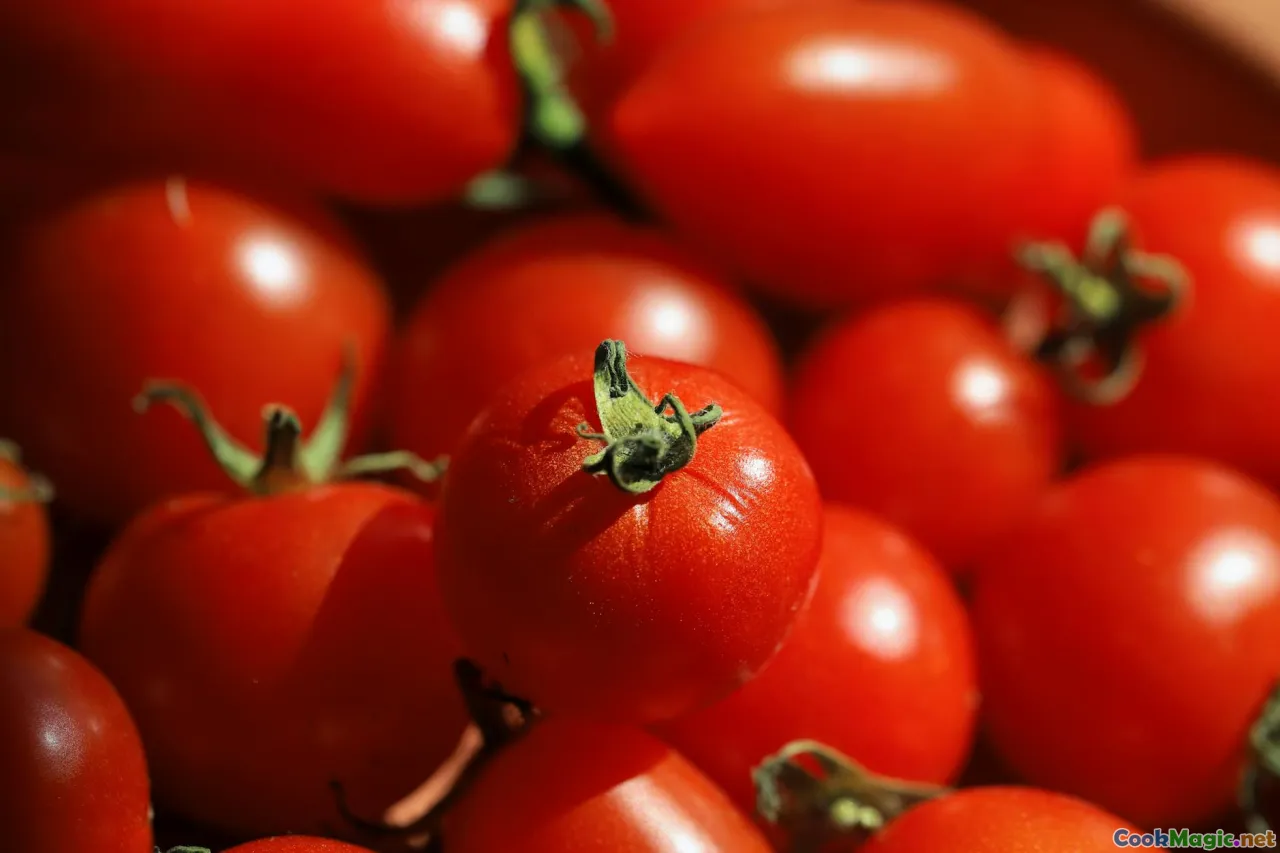
Bush tomato most often refers to Solanum centrale, a small native nightshade endemic to arid Australia. You’ll hear it called akudjura (a Pitjantjatjara/Yankunytjatjara name) or desert raisin. Several similar native Solanum species are used by different communities; all share that distinctive raisiny, savory-fruity profile once dried.
Important to know:
- Raw, unripe bush tomato can be bitter or even harmful (like many nightshades). Traditional knowledge guides harvest at full ripeness, which is then typically dried. If you’re buying, it’s sold dried or ground and safe to use.
- The aroma is layered: caramelized sugars, dried herbs, slight smokiness. When you grind it, you’ll get a toasty, almost cocoa-like warmth with tomato leaf notes.
- Texture matters. Whole dried fruits are chewy, with tiny crunchy seeds. Ground, it becomes a spice—think of it as Australia’s answer to sun-dried tomato powder, but with more complexity and a hint of native thyme.
Culturally, bush tomato is more than flavor. It’s a food with deep ties to Country, knowledge systems, and women’s business in many regions. Using it well means respecting those custodians and the ecologies that sustain it.
Sourcing with Respect and Seasonality

As chefs and cooks, we vote with our purchasing power. Look for Indigenous-owned or collaborative operations that pay and partner fairly with communities. A few reputable sources in Australia include:
- Something Wild in South Australia, founded by the Motlop family (Larrakia). Solid track record in wild foods, including bush tomato.
- Warndu (SA), co-founded by Damien Coulthard (Adnyamathanha) and Rebecca Sullivan—shop and resources, plus their book “Warndu Mai” is a great primer.
- Outback Pride Produce, working with remote community growers.
- Local growers’ markets—Todd Mall Markets in Mparntwe/Alice Springs often have stalls with dried fruits in season.
Seasonally, the fruits are harvested late spring to early summer depending on rains; drying traditionally happens on-country and in controlled facilities. When buying, smell for caramel and clean tomato notes—avoid stock that smells musty or flat. Store whole fruits airtight, away from light; they’ll keep their perfume for several months. Ground bush tomato loses volatile aromas more quickly; grind as needed in a spice mill.
Pantry Setup: From Whole Fruit to Kitchen Magic
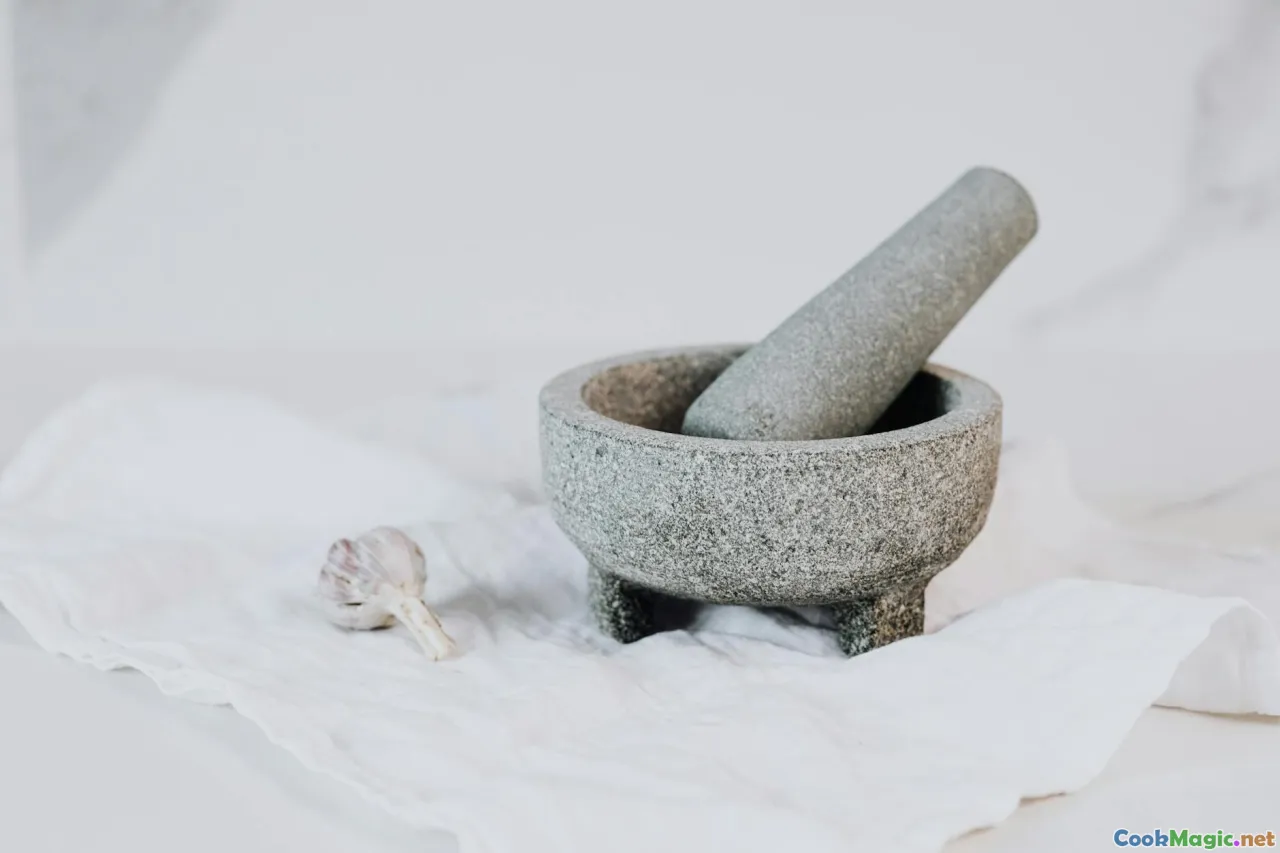
You can treat bush tomato three ways at home.
- Whole, as a garnish or stew component
- Rinse quickly to remove dust if buying very rustic stock.
- Rehydrate gently in warm water, stock, or wine for 10–15 minutes if you want a tender bite. Save the soaking liquid—it’s liquid gold.
- Toss into breads, stuffings, pilafs for chewy sweet-savoury pops.
- Coarsely crushed
- Use a mortar and pestle to crack the shells and release oils. Sprinkle over grilled meats or salads like croutons of flavor.
- Finely ground (powder)
- Grind small batches in a coffee/spice grinder. You’ll get a savory powder that disappears into sauces and rubs.
Blooming and toasting: A crucial step. Like many spices, bush tomato wakes up in fat and gentle heat. Swirl it in olive oil or butter for 30–45 seconds at medium heat until fragrant, then proceed with your recipe. This reduces potential harshness and unlocks caramel notes.
Flavor Map: Sweet Meets Savory in a Single Berry
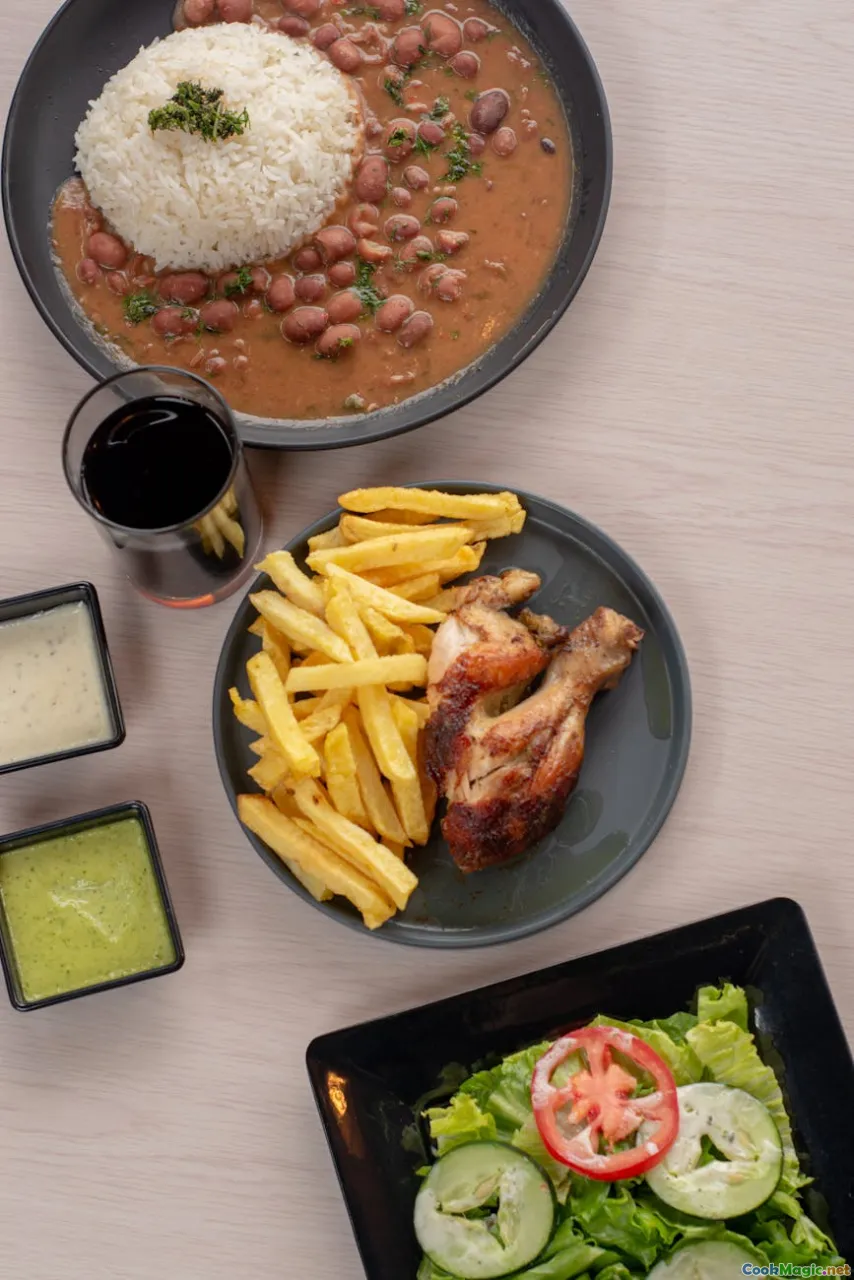
Bush tomato sits on the seam between savory and dessert. Imagine sundried tomato, golden raisin, lightly burned sugar, and dried oregano had a little desert baby.
Savory pairings:
- Proteins: Kangaroo, lamb shoulder, emu, chicken thigh, pork belly, firm tofu.
- Seafood: Barramundi, mulloway, skin-on snapper—fish that love brown butter and bright citrus.
- Vegetables: Eggplant, pumpkin, charred corn, roast mushrooms, charred capsicum.
- Pantry: Olive oil, balsamic or bush vinegars, tomato paste, miso, anchovy, parmesan.
- Herbs/spices: Lemon myrtle, pepperberry, native thyme, bay leaf, smoked paprika, rosemary.
Sweet pairings:
- Chocolate (especially 70% dark), coffee, wattleseed, macadamia.
- Native fruits: Desert lime, quandong, Davidson’s plum, rosella.
- Dairy: Brown-butter ice cream, mascarpone, ricotta, cultured cream.
- Sweeteners: Honey, treacle, panela, golden syrup.
Use it to bridge menus: a savory glaze that behaves like dessert, or a dessert that behaves a little like a tomato jam hiding in chocolate.
Recipe: Slow-Braised Kangaroo with Bush Tomato, Pepperberry and Red Wine
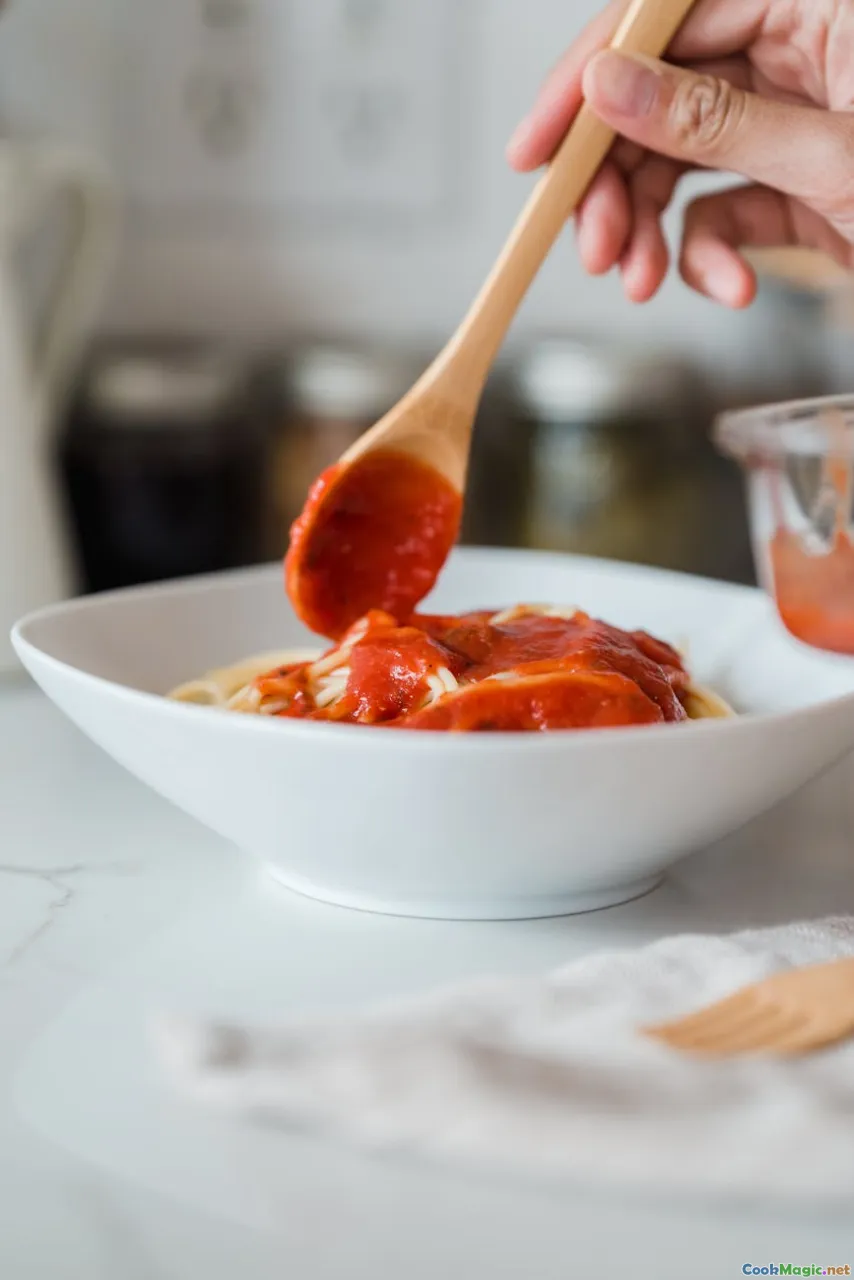
A fork-soft ragu with an Australian accent. If kangaroo isn’t available, beef shin or lamb shoulder make worthy substitutes.
Serves 6–8 Time: 3 hours
Ingredients:
- 1.2 kg diced kangaroo leg or fillet, cut into 2–3 cm cubes
- 2 tsp salt, 1 tsp freshly ground black pepper
- 2 tbsp olive oil, plus extra
- 1 large brown onion, finely diced
- 2 carrots, finely diced
- 2 celery sticks, finely diced
- 4 garlic cloves, sliced
- 1 tbsp tomato paste
- 2 tsp ground bush tomato (plus extra to finish)
- 1 tsp ground pepperberry (or black pepper)
- 1 bay leaf
- 300 ml good red wine
- 500 ml beef or game stock
- 50 g whole dried bush tomatoes, lightly crushed
- 2 strips of orange peel (optional, for brightness)
- 1 tsp sugar or a splash of balsamic (to round acidity)
- Fresh parsley, chopped, to serve
- Pappardelle or polenta, to serve
Method:
- Season kangaroo with salt and pepper. Heat a heavy pot (cast iron works well) with 1 tbsp olive oil. Sear kangaroo in batches until well browned; set aside.
- Add another tbsp olive oil to the pot. Soften onion, carrot, and celery over medium heat for 8–10 minutes until sweet and golden at the edges. Add garlic; cook 1 minute.
- Clear a space in the pot; add tomato paste. Cook 1–2 minutes until brick-red and caramelized. Sprinkle in ground bush tomato and pepperberry; bloom in the oil for 30 seconds.
- Deglaze with red wine, scraping up fond. Reduce by half. Add stock, bay leaf, orange peel, sugar/balsamic, whole crushed bush tomatoes, and the browned kangaroo with juices.
- Bring to a gentle simmer. Cover and cook on low for 1.5–2 hours until the meat is spoon-tender. Check occasionally; if it dries, add a splash of stock or water.
- Adjust seasoning. To finish, stir in a pinch more ground bush tomato for a fresh top note and a drizzle of olive oil.
- Toss with wide ribbons of pappardelle or spoon over soft polenta. Shower with parsley. The sauce will be glossy, the aroma a savory-caramel hum with pepperberry’s foresty perfume.
Cook’s tip: Kangaroo is lean—don’t cook it roaring; keep the simmer lazy to avoid stringiness. A small knob of butter at the end gives it shine.
Recipe: Barramundi with Brown Butter, Bush Tomato and Lemon Myrtle

The nutty sweetness of beurre noisette pairs beautifully with bush tomato’s caramel-oregano notes.
Serves 4 Time: 25 minutes
Ingredients:
- 4 skin-on barramundi fillets (about 180 g each)
- Salt and black pepper
- 2 tbsp olive oil
- 80 g unsalted butter
- 1 tsp ground bush tomato
- 1/2 tsp lemon myrtle (ground) or grated lemon zest
- 1 tbsp capers, rinsed
- Juice of 1/2 lemon
- Handful flat-leaf parsley, chopped
Method:
- Pat fish dry; season skin generously with salt and lightly on the flesh side with salt and pepper.
- Heat olive oil in a nonstick or well-seasoned pan over medium-high. Lay fish skin-side down; press lightly to prevent curling. Cook 3–4 minutes until skin is crisp and the flesh is mostly opaque.
- Flip; cook 30–60 seconds more. Transfer to warm plates.
- Add butter to the hot pan. Let it foam and turn hazelnut brown, 2–3 minutes. Lower heat; whisk in ground bush tomato and lemon myrtle. The butter will blush reddish-brown and smell like caramelized tomato with eucalyptus-citrus top notes.
- Toss in capers and a squeeze of lemon. Spoon over fish and scatter parsley. Serve with roasted pumpkin or charred broccolini.
Recipe: Charred Eggplant Dip with Bush Tomato and Smoked Almonds

A rustic mezze that plays like baba ghanoush crossed with a smoky tomato relish.
Serves 6 as a starter Time: 40 minutes
Ingredients:
- 2 large eggplants (about 700 g total)
- 2 tbsp olive oil, plus extra
- 1 small red onion, finely diced
- 2 garlic cloves, minced
- 1 tsp ground bush tomato
- 1 tsp smoked paprika
- 1 tbsp tomato paste
- 1 tbsp red wine vinegar
- 30 g whole dried bush tomatoes, rehydrated and chopped
- 30 g smoked almonds, chopped
- 2 tbsp parsley, chopped
- Salt, pepper, a pinch of sugar
- Flatbread to serve
Method:
- Char eggplants directly over a gas flame, turning, until blackened and collapsing (10–12 minutes), or roast at 230°C/450°F until collapsed. Cool, peel, and drain in a colander for 10 minutes to shed bitterness.
- Chop pulp and set aside.
- Warm 2 tbsp olive oil in a pan. Soften red onion for 5 minutes, add garlic for 1 minute. Stir in tomato paste; cook until darkened. Sprinkle bush tomato and smoked paprika; bloom 30 seconds.
- Add eggplant pulp, vinegar, chopped rehydrated bush tomatoes, and a pinch of sugar. Cook 3–4 minutes, stirring. Season with salt and pepper.
- Fold through smoked almonds and parsley. Drizzle with good olive oil. Serve warm with flatbread. It’s smoky, sweet-savoury, and faintly nutty—perfect with chilled rosé.
How-To: Bush Tomato Caramel Slice with Wattleseed Biscuit Base

Classic Aussie caramel slice gets a desert-tinged makeover: wattleseed for coffee-biscuit warmth and bush tomato in the caramel to tug the sweetness toward sophisticated.
Makes 20 squares Time: 1 hour plus chilling
Biscuit base:
- 150 g plain flour
- 90 g desiccated coconut
- 100 g brown sugar
- 1 tsp ground roasted wattleseed (or instant espresso powder)
- 125 g unsalted butter, melted
- Pinch of salt
Caramel layer:
- 395 g can sweetened condensed milk
- 120 g unsalted butter
- 100 g golden syrup
- 1 tsp ground bush tomato (sifted)
- Pinch of salt
Chocolate top:
- 200 g dark chocolate (70%)
- 1 tbsp neutral oil
- Flaky sea salt mixed with a whisper of ground bush tomato, to finish
Method:
- Heat oven to 180°C/350°F. Line a 20 x 30 cm slice tin with baking paper.
- Combine base ingredients; press evenly into the tin. Bake 12–15 minutes until golden.
- For caramel, melt butter, condensed milk, and golden syrup over medium heat, stirring constantly, until thick and bubbling (5–7 minutes). Remove from heat; whisk in sifted bush tomato and a pinch of salt. The caramel will turn a deeper amber with perfumed tomato notes.
- Pour over warm base; smooth. Return to oven for 10 minutes to set.
- Melt chocolate with oil in a bowl over barely simmering water. Pour over set caramel; tap to level. Sprinkle with bush tomato salt.
- Chill until firm, then cut with a hot knife. The bite moves from snappy chocolate to fudgy caramel to crisp, toasty base—every now and then a sun-warm echo of the desert cuts the sweetness.
Jam Jar Project: Desert Lime and Bush Tomato Marmalade

Sharp desert lime and caramel-savory bush tomato meet in a breakfast jar that also loves cheese boards.
Makes 4 small jars Time: 1.5–2 hours
Ingredients:
- 400 g desert limes (or small limes), thinly sliced, seeds reserved
- 200 g water
- 300 g sugar (adjust to taste)
- 40 g whole dried bush tomatoes, soaked and chopped
- 1 tsp ground bush tomato
- Pinch of salt
Method:
- Tie lime seeds in a small muslin bag (they add pectin). Combine sliced limes, water, and seed bag in a saucepan. Bring to a simmer; cook 30–40 minutes until peel is tender.
- Stir in sugar, chopped bush tomatoes, and salt. Simmer, stirring, until gel point (105°C/221°F) or until a spoonful wrinkles when pushed on a chilled plate, about 20–30 minutes.
- Off the heat, stir in ground bush tomato. Jar while hot into sterilized jars. The set should be soft and glossy; the flavor carries lime’s lightning and a savory caramel undertow.
Uses: Spread on sourdough with cultured butter, glaze roast chicken thighs, or spoon onto a wedge of Pyengana cheddar.
Chocolate Corner: Bush Tomato Salted Ganache Truffles
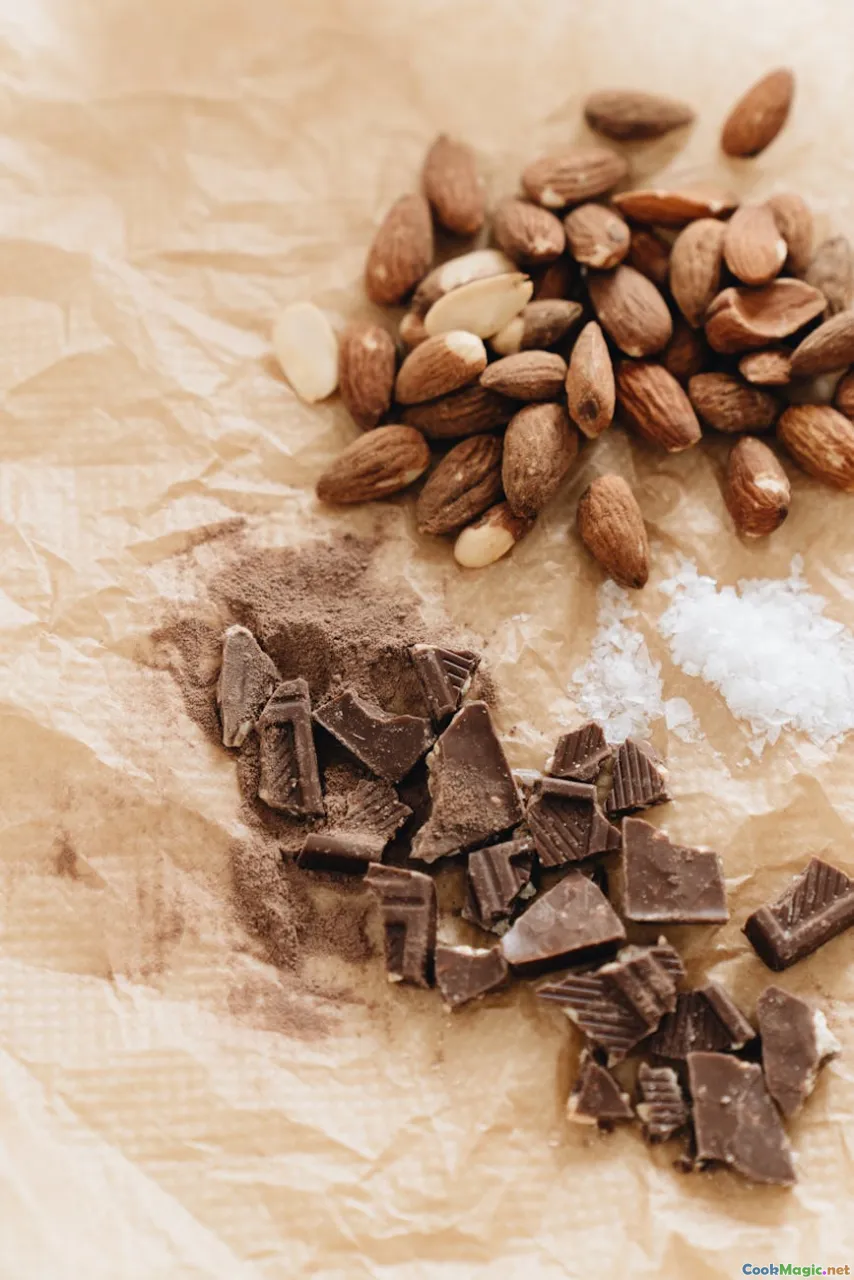
Bush tomato’s roasted-savoury sweetness is a stealth partner for dark chocolate.
Makes about 24 Time: 1 hour plus chilling
Ingredients:
- 250 g dark chocolate (70%), chopped
- 200 ml thickened cream
- 20 g butter
- 1 tsp ground bush tomato
- 1 tbsp brandy or Davidson’s plum liqueur (optional)
- Cocoa powder for dusting
- Finishing salt mixed with a pinch of ground bush tomato
Method:
- Warm cream to steaming, not boiling. Stir in ground bush tomato; cover and infuse 10 minutes.
- Reheat cream; strain if you prefer a smoother ganache. Pour over chopped chocolate and butter; stand 1 minute. Stir from center until glossy. Add brandy if using. Chill until scoopable.
- Scoop and roll into balls. Dust with cocoa and a tiny pinch of bush tomato salt on top. The finish is like salted caramel met tomato leaf in a chocolate shop.
Campfire Story: Damper, Tin Mugs, and a Pinch of Akudjura

I learned the magic of simplicity on a chilly desert evening, the sky a spill of stars. We mixed flour, water, and a fistful of grated cheddar in a bowl scratched with red dust. Into it went a tablespoon of crushed bush tomato—no measuring spoon, just the scent test: stop when the dough smells like a bakery in a tomato patch. The damper baked in the coals, its crust blistered and smoky. When we tore it open, steam spiraled into the night and the crumb smelled of buttered toast and sun-sweet tomatoes. We ate it hot with a smear of butter and a lick of honey. The sweetness made the bush tomato jump higher; the cheddar kept it grounded. Sometimes the best recipe is one you make with your nose, your hands, and a circle of friends.
If you’re making this at home: 300 g self-raising flour, 1 tsp salt, 180 ml water, 100 g grated cheddar, 1 tbsp crushed bush tomato. Mix, shape into a round, bake at 200°C/390°F for 30–35 minutes. Serve with butter and honey.
Compare and Contrast: Bush Tomato vs Sun-dried Tomato vs Raisin

- Sweetness: Raisins are bluntly sweet; sun-dried tomatoes are sweet-savory; bush tomato sits between, sweeter than sun-dried tomato but with a roasted edge and light bitterness. Think of it as a raisin that went to culinary school in a tomato field.
- Aroma compounds: Sun-dried tomatoes scream glutamates and concentrated tomato acids; bush tomato carries Maillard-y pyrazines (toasty, nutty), caramelized sugars, and herbal notes akin to oregano or tomato leaf. Raisins offer more grapey esters.
- Texture: Bush tomato is firmer than raisins; the seeds can be crunchy in a pleasant way, like caviar of the desert. Sun-dried tomatoes are pliant-chewy; raisins are soft.
- Culinary behavior: Bush tomato excels as a spice—ground and bloomed—while sun-dried tomatoes prefer to be chopped and hydrated. Raisins wander easily into cakes and tagines. Bush tomato can play all three roles depending on treatment.
Technique Clinic: Managing Bitterness, Blooming Flavor, and Rehydration

- Bitterness check: If your bush tomato tastes harsh, it may be under-ripe or old stock. Bloom ground bush tomato in fat with a pinch of sugar; add acidity (a splash of vinegar or citrus). Salt also balances bitterness.
- Blooming: Heat 1–2 tsp of ground bush tomato in oil or butter for 30–45 seconds until fragrant. Don’t burn it; you’re coaxing, not scorching.
- Rehydration: Cover whole fruits with warm liquid for 10–15 minutes. Stock adds savory layers; wine brings fruitiness. Save the soaking liquid to deglaze pans or build sauces.
- Dosage: Bush tomato is potent. As a rule of thumb, start with 1 tsp ground per 4 servings and adjust. For whole fruit, a small handful (20–30 g) enriches a stew for 4–6 people.
- Texture tweaks: If seeds bother you, blitz ground bush tomato and sift; use the fine powder and reserve the gritty bits for infusions or sauces where you’ll strain.
Drinks Cabinet: A Bush Tomato Negroni and a Savory Shrub

Bush tomato in your glass? Absolutely.
Bush Tomato Negroni (serves 1):
- 30 ml gin
- 30 ml Campari
- 30 ml sweet vermouth
- 1/8 tsp ground bush tomato
- Orange peel Method: Stir the spirits with bush tomato and ice for 20–30 seconds; strain into a rocks glass over a big cube. Express orange peel. The drink smells like a Negroni in a tomato garden; the bitterness dovetails with Campari like old friends.
Savory Shrub (makes 500 ml):
- 200 g chopped ripe tomatoes
- 30 g whole bush tomatoes, lightly crushed
- 150 g sugar
- 200 ml apple cider vinegar
- 1 sprig native thyme (or regular) Method: Macerate tomatoes, bush tomatoes, and sugar 12 hours. Strain, then whisk in vinegar. Steep with thyme 24 hours, strain again. Serve with soda and a wedge of lime. It’s a summer barbecue in a glass—sweet, tangy, herbaceous.
A Bush Tomato Dinner Party Menu (with Timeline)

This menu moves from bright to deep, and the ingredient threads through each course without grandstanding.
Menu:
- Nibbles: Charred eggplant dip with bush tomato and smoked almonds; sliced cucumbers; warm pita.
- Main: Barramundi with brown butter, bush tomato and lemon myrtle; salad of charred corn, roast pumpkin, and rocket.
- Side: Damper with cheddar and bush tomato, served with butter and honey.
- Dessert: Bush tomato caramel slice; coffee or tea with bush tomato truffle.
Timeline (for a 7 pm dinner):
- 10 am: Make caramel slice; chill. Toast smoked almonds. Grind a small jar of bush tomato to have on hand.
- 3 pm: Prep eggplant dip; refrigerate. Make shrub for anyone who wants a non-alcoholic aperitif.
- 5 pm: Mix and bake damper dough; keep warm in a tea towel. Prep fish and brown-butter ingredients.
- 6:30 pm: Plate dip and nibbles, open wine.
- 6:45 pm: Cook barramundi; toss salad.
- 7 pm: Serve mains and sides.
- 8 pm: Coffee/tea and dessert; pass around truffles and a small bowl of bush tomato finishing salt for the curious.
Troubleshooting and Little Secrets

- My dish tastes flat: Add a whisper of ground bush tomato at the end as a finishing spice, and a squeeze of lemon. Adding all at the start is great for depth, but a final pinch brightens the bouquet.
- It’s too bitter: Bloom the spice in butter with a pinch of sugar, or fold in some tomato paste that’s been cooked to sweetness. A knob of butter or drizzle of olive oil softens edges; so does dairy.
- Overpowering aroma: You used too much. Remember: start at 1 tsp ground per 4 servings. Like saffron, restraint seduces.
- Gritty seeds: Sift your ground spice, or fully rehydrate and chop the whole fruit before adding to creamy textures.
- Storage: Whole fruit airtight for 6–9 months in a cool cupboard; ground spice for 2–3 months. Freeze ground spice to extend life.
- Quick trick: Bush tomato butter. Mash 1 tsp ground bush tomato and a pinch of salt into 100 g soft butter. Smear on hot corn or steak. It’s outrageous.
Culture, Custodianship, and Continuing the Story

When we cook with bush tomato, we aren’t just borrowing flavor. We’re touching a web of relationships—people, plants, place. In many communities, women’s knowledge guides where, when, and how to harvest: not stripping a plant, leaving green fruit to ripen, understanding seasons that don’t fit neat calendars but listen to winds, to bird calls, to rain memory.
One afternoon at a community art center on the APY Lands, I watched a conversation unfold over tea: which patches were fruiting, who needed a lift out to check after the last rains, how to dry the harvest so it wouldn’t mold. There was laughter about city chefs who think ingredients arrive in a courier box smelling of cardboard and tape. The unspoken part was a lesson: food is story, labor, connection. If we want the sweetness and the savor, we need the relationship too.
Support Indigenous-led businesses. Ask your supplier: Who grew this? Who benefits? Pay more for the answer you want to hear. Learn the names, not just the flavors. And when you put bush tomato on a menu, give it a line that honors its home.
- Acknowledgment on menus: “Bush tomato (akudjura), sourced in partnership with [Supplier], supporting [Community] growers.”
- Donate a portion of a dish’s proceeds to organizations that support cultural food projects or ranger programs.
- Read and cook from Indigenous authors; invite them to speak in your kitchens and schools.
As cooks, we tell stories with heat and time. Bush tomato is a story worth telling slowly. When it blooms in butter, the kitchen smells like the recipe has a past—a past longer than any cookbook. Let it in. Respect it. And enjoy that moment when someone tastes your ragu or your caramel slice and pauses, searching for the word. You can tell them: It tastes like the desert at dusk—sweet, savory, and a little bit of starlight.









